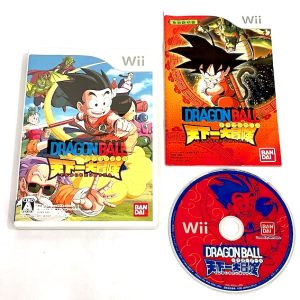Nintendo Wii
 In developing the Wii, Nintendo president Satoru Iwata directed the company to avoid competing with Microsoft and Sony on computational graphics and power and instead to target a broader demographic of players through novel gameplay. Game designers Shigeru Miyamoto and Genyo Takeda led the console’s development under the codename Revolution. The primary controller for the Wii is the Wii Remote, a wireless controller with both motion sensing and traditional controls which can be used as a pointing device towards the television screen or for gesture recognition. The Wii was Nintendo’s first home console to directly support Internet connectivity, supporting both online games and for digital distribution of games and media applications through the Wii Shop Channel. The Wii also supports wireless connectivity with the Nintendo DS handheld console for selected games. Initial Wii models included full backward compatibility support for the GameCube. Later in its lifecycle, two lower-cost Wii models were produced: a revised model with the same design as the original Wii but removed the GameCube compatibility features and the Wii Mini, a compact, budget redesign of the Wii which further removed features including online connectivity and SD card storage.
In developing the Wii, Nintendo president Satoru Iwata directed the company to avoid competing with Microsoft and Sony on computational graphics and power and instead to target a broader demographic of players through novel gameplay. Game designers Shigeru Miyamoto and Genyo Takeda led the console’s development under the codename Revolution. The primary controller for the Wii is the Wii Remote, a wireless controller with both motion sensing and traditional controls which can be used as a pointing device towards the television screen or for gesture recognition. The Wii was Nintendo’s first home console to directly support Internet connectivity, supporting both online games and for digital distribution of games and media applications through the Wii Shop Channel. The Wii also supports wireless connectivity with the Nintendo DS handheld console for selected games. Initial Wii models included full backward compatibility support for the GameCube. Later in its lifecycle, two lower-cost Wii models were produced: a revised model with the same design as the original Wii but removed the GameCube compatibility features and the Wii Mini, a compact, budget redesign of the Wii which further removed features including online connectivity and SD card storage.
The Wii repositioned Nintendo as a key player in the video game console marketplace. The introduction of motion-controlled games via the Wii Remote led both Microsoft and Sony to develop their own competing products—the Kinect and PlayStation Move, respectively. Nintendo found that, while the Wii had broadened the demographics that they wanted, the core gamer audience had shunned the Wii. The Wii’s successor, the Wii U, sought to recapture the core gamer market with additional features atop the Wii. The Wii U was released in 2012, and Nintendo continued to sell both units through the following year. The Wii was formally discontinued in October 2013, though Nintendo continued to produce and market the Wii Mini through 2017, and offered a subset of the Wii’s online services through 2019.
Showing 1–16 of 115 results
-

428 – Fuusa Sareta Shibuya de
Rp200,000.00 Add to cart -

Akumajo Dracula Judgment
Rp450,000.00 Add to cart -

Anpanman Nico Nico Party
Rp700,000.00 Add to cart -

Bio Hazard Umbrella Chronicle
Rp250,000.00 Add to cart -

Bleach Wii: Hakujin Kirameki Rondo
Rp250,000.00 Add to cart -

Bleach: Versus Crusade
Rp300,000.00 Add to cart -

Boku to Sim no Machi Kingdom
Rp250,000.00 Add to cart -

Dai Kaijuu Battle Ultra Colosseum
Rp250,000.00 Add to cart -

Dairantou Smash Brothers X
Rp300,000.00 Add to cart -

Dairantou Smash Brothers X (missing manual book)
Rp150,000.00 Add to cart -

Disney High School Musical Dance
Rp200,000.00 Add to cart -

Donkey Kong Returns
Rp300,000.00 Add to cart -

Dragon Ball: Tenkaichi Daibouken
Rp250,000.00 Add to cart -

Dragon Quest Monster Battle Road Victory
Rp100,000.00 Add to cart -

Dragon Quest Monster Battle Road Victory
Rp350,000.00 Add to cart

